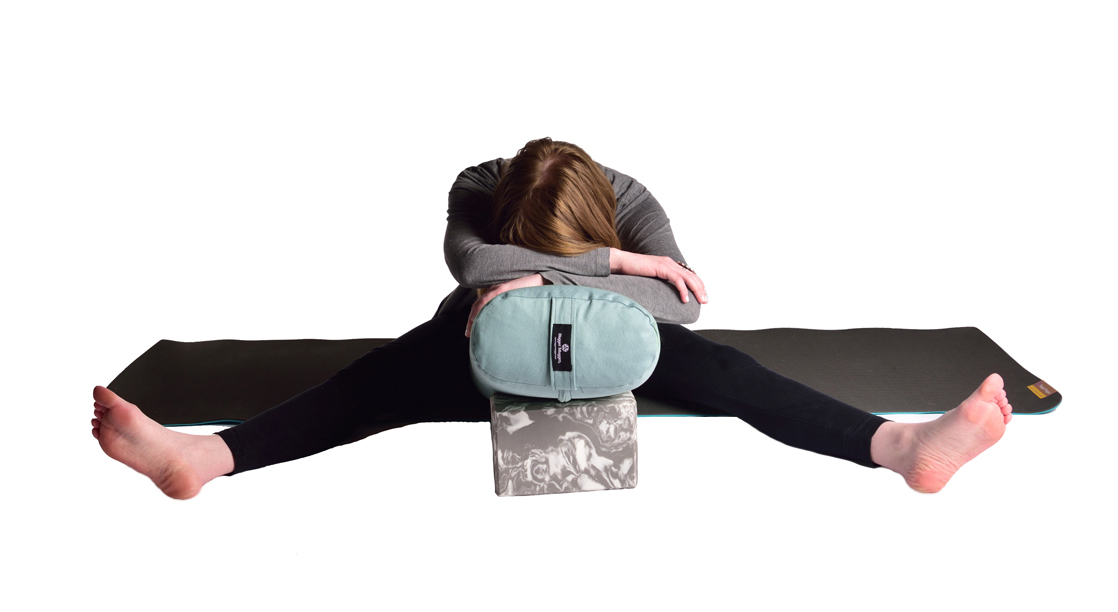
Forward bends are an integral part of asana practice. Bodies folded in half “like a jack knife” are iconic images in the yoga photo canon, and loose hamstrings are often considered to be essential to being a “good” yogi. (I quibble with this, but that’s another post!)
Because of the wide variations in body structures, many—probably most—people will never touch nose to knee with straight legs. This is not a problem. Yoga practice was never meant to be about performance. As far as I know, no one has ever magically become enlightened when they touched their head to their knees in a forward bend.
The good news is, forward bends confer other benefits beyond hamstring stretching. Forward bending is calming and grounding, and it is much more calming when our bodies can actually rest while we’re practicing. This is where a few well-placed yoga props can help.
Even if you are flexible, practicing Restorative (supported) forward bends can be very beneficial. It is arguable that extreme forward bending is not necessarily the healthiest choice even for those who can rest their noses on their knees. For people who are especially flexible, backing off and not moving to your maximum range of motion can be beneficial in protecting your joints, especially your hip joints, vertebral joints and sacroiliac joints.
How to Bolster Your Forward Bends
- Place a Yoga Block on its side on a Yoga Mat or on the floor. (Placing your block on a nonskid mat may or may not be necessary depending on the slickness of the surface you’re practicing on. But if you want to be sure that your setup will be completely secure, it’s best to use a yoga mat.)
- Place a Standard Bolster on the floor so that one end is resting on the block, and the other is on your mat.
- Sit in front of the low end of your bolster in Upavista Konasana (Wide-Legged Seated Forward Bend Pose).
- Leading with your pelvis, bend your torso forward over your slanted bolster.
- If your bolster is not high enough for your torso, you can augment it by placing one or more Yoga Blankets on top. You can also build up just the area under your head with more blankets. I don’t recommend placing the block on its end—in its tallest orientation—to create more height under your bolster. Your block won’t be as stable in that orientation and could fall over.
- Let your body rest completely. Breathe and relax. Stay as long as you want, but let your body settle into the pose for at least 10-15 slow, deep breaths. Settle onto your bolster a bit more deeply on each exhalation.
